The Stinner Refugio Is a Glorious Gravel Flyer
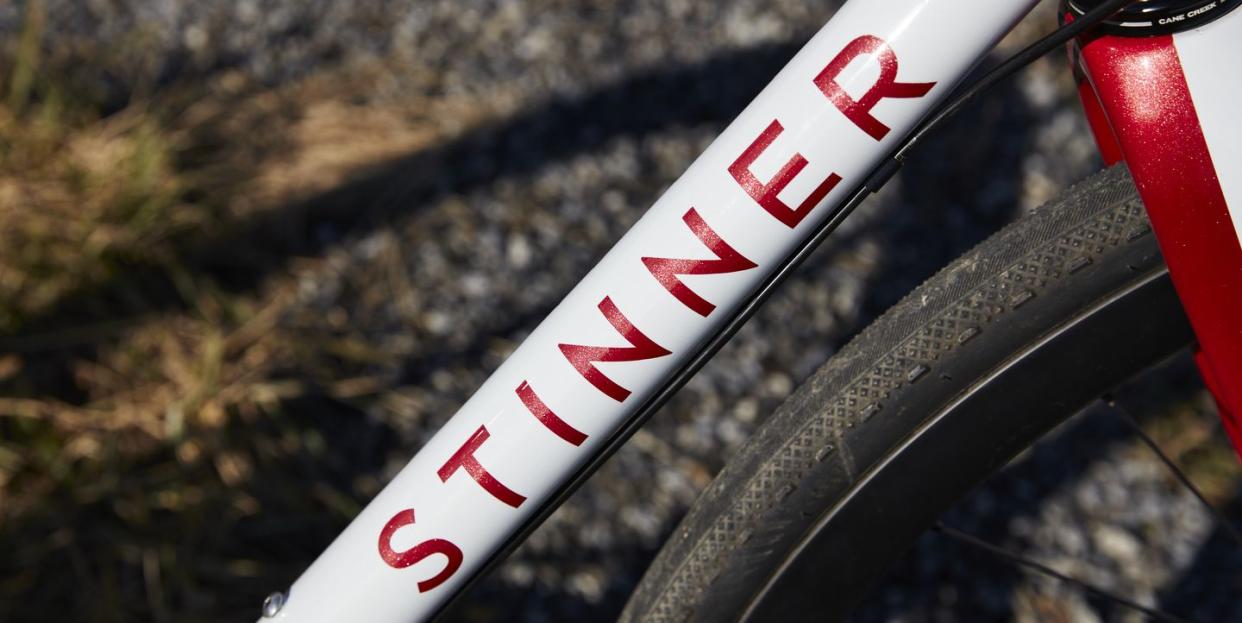
Price: $7,644 as shown. Complete bikes start at $4,729.
Weight: 18.8 lb. (as tested)
Style: Gravel
Drivetrain: SRAM Red22 2x11
Tire clearance: 40mm (700c), 47mm (650b)
The right bike for: Someone seeking an uncommon gravel bike with soul.
There are cool bikes, and there are great bikes. Not all cool bikes are great bikes, and not all great bikes are cool bikes. The Stinner Refugio is one of those rare bikes that is both cool and great.
Stinner is a small bike brand based in Santa Barbara, California. It builds steel and titanium frames, and paints them too. It’s one of the newer crop of small builders, but one that’s notably grown beyond the one-person-in-their-garage stage, yet hasn’t reached the size of a “big” small builder like Seven or Moots. It’s a company that’s more ambitious—for example, developing its own carbon forks—than most small builders, but hasn’t lost its scruffy vibe. It’s a brand that most of your riding buddies won’t have—much less have heard of—but it offers refined performance.
The Refugio sings, finding a sweet middle ground with its steel tubing to provide lively compliance, and sharp handling and efficiency. The handling falls to the quicker end of the spectrum for a gravel bike (it mellows a bit with 47mm tires on 650b wheels) which gives it a sporty and race-like feel. That character allows the pavement connectors of gravel rides pass quickly, without the soft and sluggish feel that hampers some gravel bikes. And with the right tires, it can make a sporty ‘cross bike, and a pretty sweet endurance road bike.
There are a plethora of gravel bikes available from builders big and small. Many are great, many are cool. But few are as flat out enjoyable to own and ride as the Stinner Refugio.
Five Cool Things — Stinner Refugio Steel
Custom Tubes and Fork
Stinner frames are built in house in Santa Barbara, California—the brand’s model names are taken from area landmarks—from steel (like this review bike), or titanium.
Stinner does not use an off-the-shelf-tubing kit from a single supplier for its frames, but instead opts for a blend of tubes from a few different Italian suppliers. This is because one supplier may have a downtube of a certain size or butting profile that suits the brand’s needs, while another may make a more desirable chainstay for a particular bike. Mixing tubes gives Stinner greater control over the Refugio’s characteristics.
Stinner goes a step further than many small builders by developing its own carbon fork, instead of using one of the popular Enve options. It’s a nice fork with good tire clearance (up to 47mm), and it’s up on current standards with 12mm DT-Swiss thru-axle and flat mounts for disc calipers. There’s nothing game changing about the fork, though the offset is 51mm—more than Enve offers in any of its road, gravel, or CX forks—so, like the tubing blend, it helps Stinner achieve a goal that wasn’t possible with off-the-shelf options.
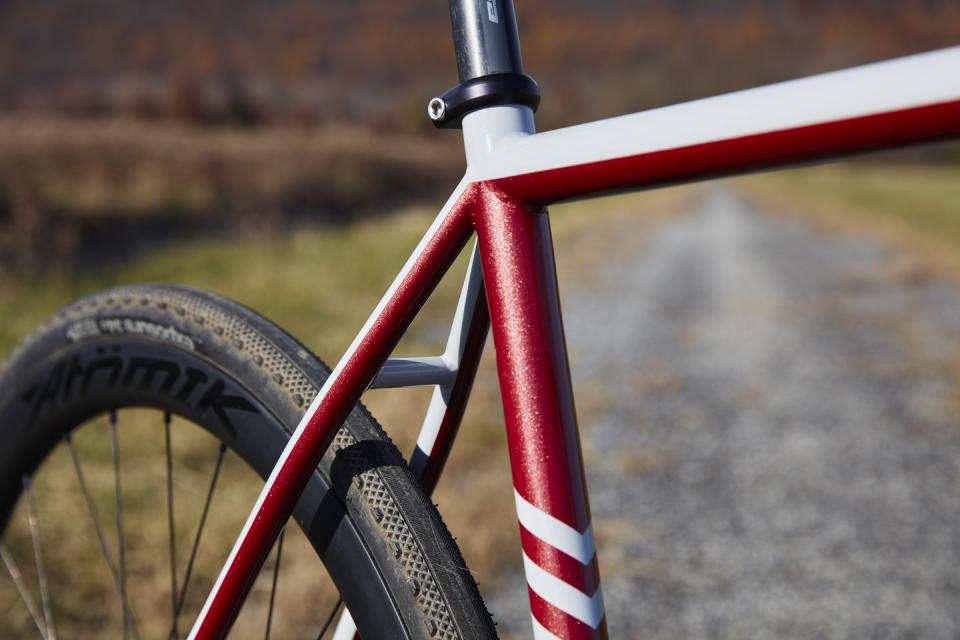
The review frame seen here represents a stock steel Refugio. Standard features include: 12x142mm thru axle; threaded BB shell; 27.2mm seatpost; full-length external derailleur housing; clearance for 40mm (700c) or 47mm (650b) tires, and up to 52/36 rings; a 44mm headtube (accepts tapered-steerer forks); and two bottle mounts.
If the stock frame doesn’t suit your needs, Stinner offers many a-la-carte options, including mounts for racks, fenders, and additional water bottles. The frame comes in five color options, and Stinner offers custom options if you want something unique.
In Stinner’s line, the Refugio slots between the Gibralter-Disc road bike and the more off-road-capable Romero (a drop-bar bike with longer, slacker angles and more tire clearance than the Refugio).
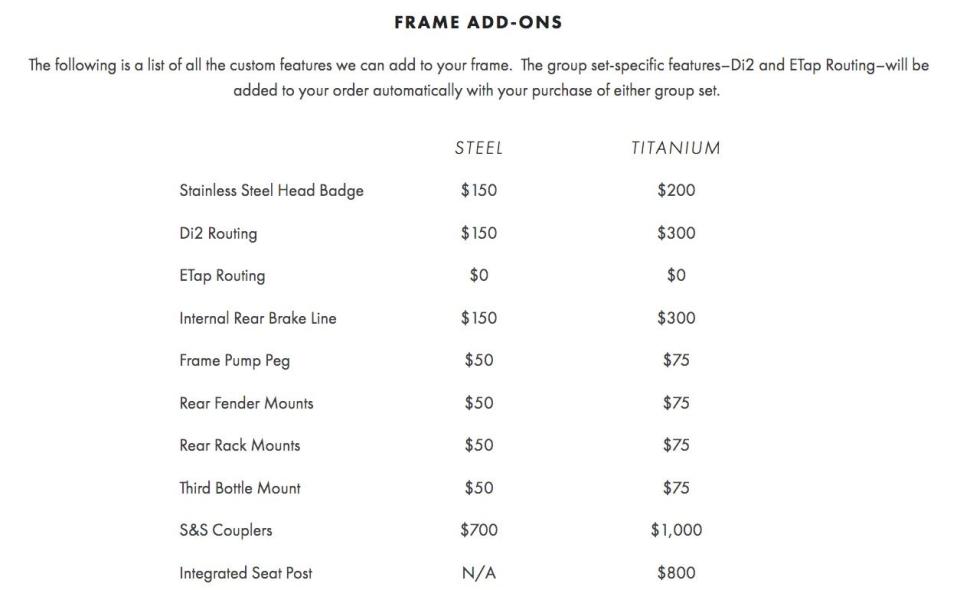
Sporty Gravel Geometry
For a gravel bike, the Stinner Refugio has relatively aggressive geometry. There’s a 71.3-degree head tube angle and 51mm offset fork that creates 66mm of trail on the 52cm review sample). The 428mm chainstays are shortish, and the bike’s reach and stack promote a slightly longer and lower fit compared with some popular gravel bikes. This 52cm bike (which fits like a 54 or medium from other brands) has a reach of 379mm and a 555mm stack height. For comparison, a 54.5cm Salsa Warbird has a reach and stack that measure 372mm, and 566mm, respectively; a 54cm Trek Checkpoint has a 383mm-long reach and 567mm stack.
If one of the Refugio’s eight stock sizes don’t suit your needs, Stinner also offers custom geometry for a reasonable $250.
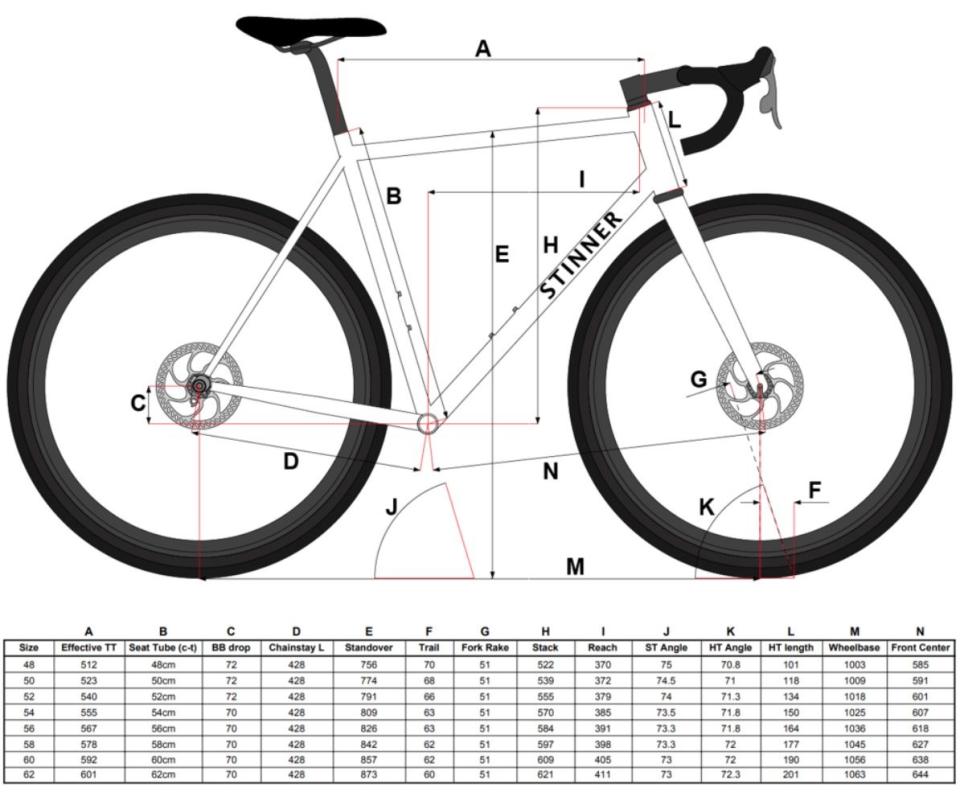
Have It Your Way
Stinner also sells the Refugio as a frame if you want to build your own. The steel frameset sells for $3,099 and it comes with a fork, seatpost clamp, and front-derailleur clamp. You can get a ti version that costs an extra $1,000.
If you prefer a complete bike, Stinner offers those also. You can choose from several cockpit configurations, bearings, drivetrains and brakes, saddles, tires, and wheel options.
The wheelset options are extensive: more than 15 are offered, all hand-built by Jones Wheels, which happens to be located next door to Stinner in Santa Barbara.
Our bike was built with SRAM’s Red22 mechanical group with hydraulic disc brakes, a FSA carbon cockpit, a Cane Creek 40 headset, SRAM BB with steel bearings, WTB Silverado saddle and Exposure tires, and wheels with White Industries hubs and Atomik’s carbon tubeless-ready rims. With these options, this Stinner Refigio would sell for $7,644. The lowest-priced complete option costs $4,799.
Glorious Ride
With a steel frame, it’s not surprising that this Refugio is a little heavy—18.8 pounds for this model even though it’s built with light, high-end parts. And it doesn’t provide the same level of efficiency as carbon frames do with their off-the-chart stiffness-to-weight ratios.
But while some steel frames try to achieve carbon-like stiffness at the expense of ride quality, and some go all in on “steel is real” at the expense of handling and crispness, few achieve the sweet middle ground that you get from the Refugio.
The ride is unmistakably steel. Bright, lively, buzzy, with some perceptible give on the bigger bumps. Yet there’s enough stiffness in the frame that the Refugio responds crisply when you dig hard to power over rises, and it’s accurate and trustworthy when you’re flying and tip it into a corners.
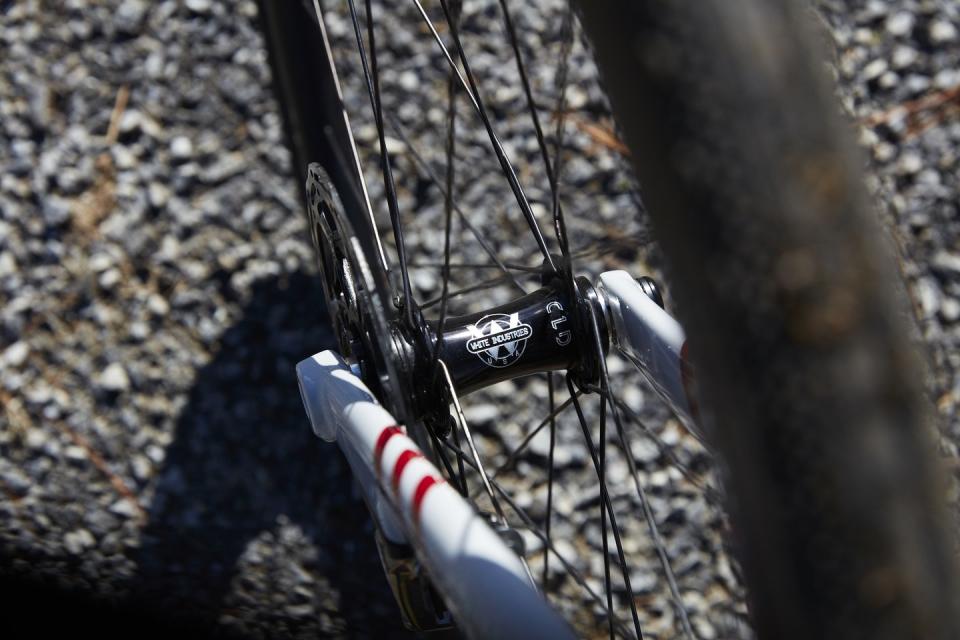
The handling leans toward the quicker-steering end of the gravel spectrum. It responds like a slightly-detuned road bike. When conditions are extreme—deep sand for example—it can seem a mite twitchy, but in most cases the Refugio feels sharp and provides great feedback. This handling gives the Refugio its versatility—it’s great at what it’s designed for, but you also can go screaming downhill at 50-plus miles per hour and or hit some singletrack and still feel pretty good.
I rode the Refugio with 700c wheels (trying various tires but mostly 34mm WTB Exposures) and with 650b wheels with 47mm tires. The 47mm tires provided a touch more cushion—though not as much as I expected—but they also made the bike feel slightly numb and sluggish. If I knew most of my rides would cover very rough terrain, I might choose the 650b wheels, but overall I found the bike rode better and was nearly as capable with 700c wheels and narrower tires. And that opinion is based on riding several of my favorite mountain bike trails on the Stinner.
In that set up, the Stinner Refugio is great riding frame with excellent handling and a sporty feel. It’s beautifully welded, finished well, and painted with precision. It’s the kind of bike and experience you want—you expect!—from a small builder but don’t always get. It is a glorious bike that stands out from a field of very good bikes.
You Might Also Like

